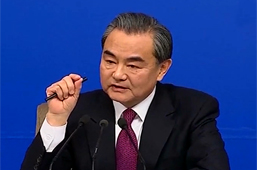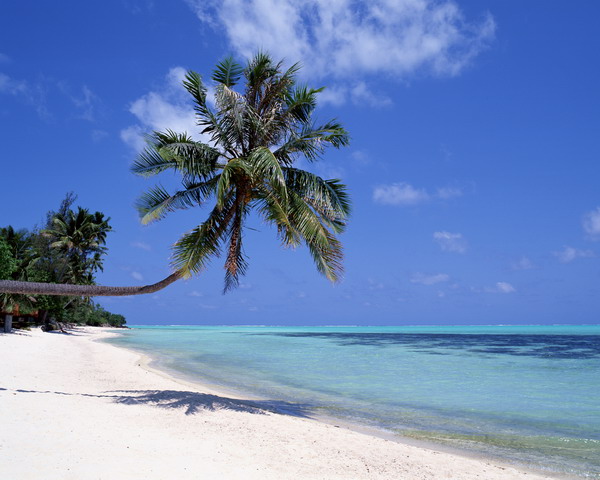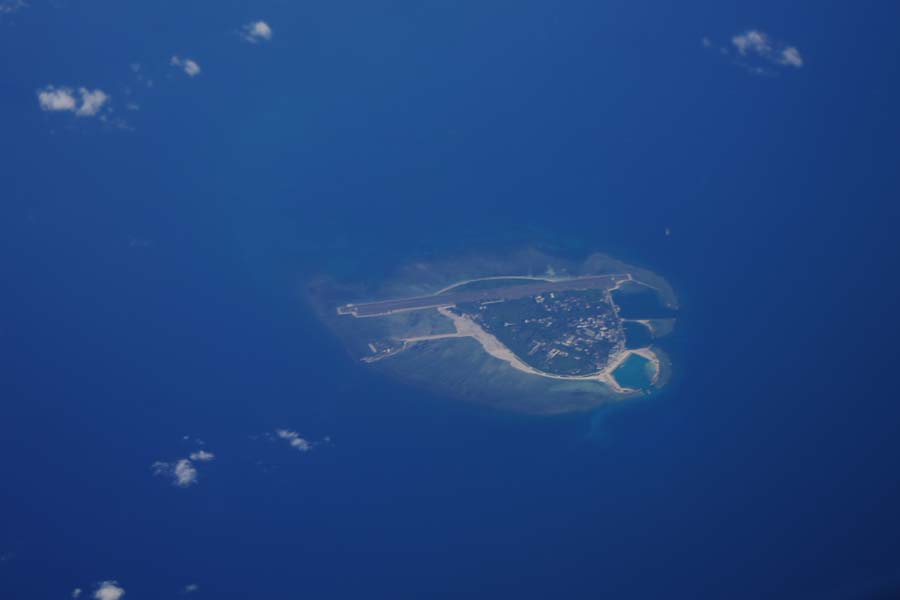The People's Republic of China (1949-)
1950
In May, the Chinese People's Liberation Army liberated Hainan Dao. The remains of the Kuomintang army retreated to Taiwan Dao. For Nansha Qundao and Xisha Qundao were a little bit far away from Taiwan Dao and was difficult to get supplies, and therefore, the Taiwan authorities decided to withdraw the garrison troops on Taiping Dao of Nansha Qundao and Yongxing Dao of Xisha Qundao back to Taiwan. As such, for a period of time, there was no one garrisoned on Taiping Dao and other Islands.
On May 15, the Chinese People's Liberation Army landed on Yongxing Dao of Xisha Qundao.
On May 17, the Philippine President Quirino alleged that Nansha Qundao "should belong to the nearest country; and the country nearest to the Tuansha Islands (editor's note: i.e. Nansha Qundao) is the Philippines".
On May 20, the Chinese Government issued a statement pointing out: the Philippines as a provocateur as well as its supporter—the US, should abandon their risky plan, otherwise, the results would be very serious. The People's Republic of China will never allow Nansha Qundao as well as any other islands belonging to China in the South China Sea to be invaded by any foreign country.
1951
On August 15, before the convening of the San Francisco Conference, Foreign Minister Zhou Enlai, in his Statement on the United States-British Draft Peace Treaty with Japan and the San Francisco Conference, solemnly pointed out that "as a matter of fact, just like all Nansha Qundao, Zhongsha Qundao and Dongsha Qundao, Xisha Qundao (the Paracel Islands) and Nanwei Dao (Spratly Dao) have always been China's territory. Though they had been occupied by Japan for some time during the war of aggression waged by Japanese imperialism, they were all taken over by the then Chinese Government following Japan's surrender. The central government of the People's Republic of China do hereby declare that, whether or not the United States-British Draft Treaty contains provisions on this subject and no matter how these provisions are worded, the inviolable sovereignty of the People's Republic of China over Nanwei Dao (Spratly Dao) and Xisha Qundao (the Paracel Islands) will not be in any way affected."
On September 4, the Peace Conference with Japan which was manipulated and presided by the United States opened in San Francisco with 52 participating countries. China, which had played the most important and decisive roles in the battles against Japan, however, was excluded from the peace conference. On September 5, Gromyko, Head of the Soviet Union Delegation made a statement on the conference, supporting Nansha Qundao, Xisha Qundao and Zhongsha Qundao as well as other islands concerned being returned to China.
On September 8, with the ignorance of the Chinese government, the 48 victorious countries and the vanquished country, Japan, signed the Peace Treaty with Japan in San Francisco, the U.S. The second clause of the treaty provided that, "Japan shall relinquish all rights, grounds of rights or claims of rights".
On September 18, Zhou Enlai, the Chinese Premier and Foreign Minister made a solemn statement on behalf of the Chinese Government as follows: "as the San Francisco Peace Treaty with Japan was not participated in, prepared, drafted or signed by the People's Republic of China, the Central Government of the People's Republic of China deems it as null and void, and therefore it absolutely will not be admitted."
1952
On April 28, the Taiwan authorities of China and Japan signed the Peace Treaty between the Republic of China and Japan, which provided in its second clause that "according to the second clause of the Peace Treaty with Japan (i.e. the San Francisco Peace Treaty) signed in San Francisco of the United States of America on September 8, 1951, Japan officially renounced all rights, title and claim to Taiwan and Penghu Islands as well as Nansha Qundao and Xisha Qundao".
On May 5, Zhou Enlai, the Chinese Premier and Foreign Minister made a solemn statement on behalf of the Chinese government pointing out that "the Japanese government on one hand accepted the one-sided San Francisco Peace Treaty at the expense of the national interests of Japan, on the other hand, it took orders from the United States, colluded with the Komintang reactionaries to enter into the illegitimate Peace Treaty between Japan and Taiwan, which was hostile to the New China. And it claimed that the peace treaty applied to ‘all territories which are currently under the rule as well as will become under the rule of the Republic of China'. This is completely unbelievable and ridiculous...both the Chinese people and the Chinese Government will not admit the illegitimate ‘Peace Treaty between Japan and Taiwan'".
In the 15th map of the Standard World Atlas published by the Japanese State Education and Books Joint-stock Company, the map of "South east Asia", the drawing of Nanhai Zhudao is the same as that of the map published in China. Both mark the People's Republic of China within the dotted line, and use Chinese to spell Dongsha Qundao, Xisha Qundao, Zhongsha Qundao and Nansha Qundao. On the title page of this atlas, there is signature of the then Japanese Foreign Minister Katsuo Okazaki.
1953
In the 168th and 169th map of the Macropaedia of the Soviet Union published by the Soviet Union, the map of "China", there was such annotation as "Xisha Qundao (Paracel) (China)" and "Nansha Qundao (China)", which indicated that both Xisha Qundao and Nansha Qundao belong to China.
On June 30, France sent five warships and a transport ship carrying about one hundred navy personnel and workers to land on Chenhang Dao, Jinqing Dao, Ganquan Dao and the Antelope Jiao, and set up navigation marks illegally.
1954
In the 9th map of the World Atlas Magnus published by the Munich Iiro Publishing House of the West Germany, there were such annotations as "the Paracel Islands (Xinnan-HIRATA, China)" and "the Spratly Islands (i.e. the storm islands) (China)", which indicated that both Xisha Qundao and Nansha Qundao belong to China.
In January, the Public Cartographic Publishing House published the Administrative Map of the People's Republic of China, making partial adjustment to the dotted line of the South China Sea: removing two sections between the Hainan Dao and the Vietnamese coast, and adding one more section between Taiwan Dao and Ryukyu Islands, thus forming the basic pattern of the nine-dotted line in the South China Sea and one-dotted line on the east coast of Taiwan Dao.
1955
On March 7, the Philippines presented a note to the UN Secretary General as per the draft provisions of the Law of the Sea proposed by the International Law Commission, declaring the islands status of the Philippines. In the note, it was proposed that the water area within the straight baselines connecting each and all outermost points of the Philippines be the internal waters of the Philippines. And the sea area within the range line of the Philippines as provided by the Paris Peace Treaty between the United States and Spain in 1898, the Washington Complementary Treaty between the United States and Spain in 1900 as well as the United States-British Treaty in 1930.
From May to June, the Hainan Administrative Region set up a team of survey and prospecting of Xisha Qundao to carry out prospecting and survey work on Xisha Qundao.
On June 11, the French Warship L9006 arrived in Yongxing Dao of Xisha Qundao, alleging the Dao being the territory of France, and forcing the Chinese fishermen stationed on the Dao to leave. And before they left the Dao, the French army even destroyed the monument symbolizing the Chinese sovereignty on the Dao.
On October 27, the first ICAO Conference on the Flights in the Pacific Region was held in Manila. Representatives from the United States, the United Kingdom, France, Japan, Canada, Australia, New Zealand, Thailand, the Philippines, the South Vietnam and the Taiwan authorities of China attended the conference. In the 24th resolution passed on the conference, it was requested that the Taiwan authorities of China should enhance meteorological observation over Nansha Qundao (4 times each day). And none of the participants attending the conference made any objections or reservations about it.
1956
In the 2A map of the Altas International Larousse Politiqueet Economique published by France, there was such annotation as "Xisha Qundao (China)". And in the 13B map, the map of "Southeast Asia", there were such annotations as "Dongsha Qundao (Pratas) (China)", "Xisha Qundao (the Paracel Islands) (China)" and "Nansha Qundao (Spratly Islands) (China)", which indicated that the above-mentioned Islands all belong to China.
From March to August, on the excuse of taking over the French sovereignty, the South Vietnam army occupied Chenhang Dao, Ganquan Dao and other islands of Xisha Qundao in batches.
In April, Guangdong Province and Hainan Administrative Region organized a Team for the Survey of Aquatic Resources on Xisha Qundao and Nansha Qundao, and set up a central station on Yongxing Dao. More than 200 people were stationed on the Dao, and grocery, public health center, club as well as power station were set up on the Dao.
On May 15, the president of the Philippine Maritime School Thomas Cloma published the so-called A Declaration to the World, claiming that since March 1, he had led the students of the maritime school to "explore" on the sea area of Nansha Qundao. And they "discovered and occupied" 33 islands, reefs, shoals and cays and fishing areas, and landed on 9 islands and reefs including Taiping Dao, Nanwei Dao, Zhongye Dao, Hongxiu Dao, Nanyao Dao, Xiyue Dao, Nanzi Jiao, Beizi Jiao as well as Dunqian Shoal. And he had named this area as "freedom land" (Kalayan in Tagalog). And the headquarters of the "freedom land" were located in the maritime school. On 17, Cloma wrote a letter to Ministry of Foreign Affairs of the Philippines, requesting the admittance of his ownership of the "freedom land".
On May 19, the Vice President and Foreign Minister of the Philippines Garcia, made a preoccupied sovereignty statement, publicly announcing that the Philippines had discovered islands "belonging to nobody and having no residents" in the South China Sea, and that the islands in the South China Sea including Taiping Dao and Nanwei Dao, "should" belong to the Philippines.
On May 29, the Chinese Ministry of Foreign Affairs made a statement with regard to the Philippine Government's attempting to infringe China's sovereignty over Taiping Dao and Nanwei Dao of Nansha Qundao, pointing out that "the above-mentioned Taiping Dao and Nanwei Dao in the South China Sea, together with some nearby islets are collectively called as Nansha Qundao. These islands have been part of China's territory. And the People's Republic of China has indisputable and legitimate sovereignty over these islands."
On June 1, the Ministry of Foreign Affairs of the Saigon regime of South Vietnam published a communiqué, asserting its sovereign rights over Xisha Qundao and Nansha Qundao, and specially emphasizing that the right of jurisdiction over these two islands of France had never aroused any controversy, and Vietnam had taken over the right of jurisdiction following its independence.
From June 2 to 14, the navy of China Taiwan authorities carried out "Liwei Cruising" over 27 islands and reefs on the South China Sea, and landed on Taiping Dao, Nanwei Dao as well as Xiyue Dao and found no foreigners residing thereon. Upon its landing, it smeared the inscriptions left by the invaders and re-erected a monument declaring sovereignty. A solemn flat-raising ceremony was held to declare China's sovereignty mightily.
On June 9, the Charge d'Affaires ad interim of French Embassy in Manila presented a note to the vice-president of the Philippines Garcia, alleging that France had never hand over Nansha Qundao to the Republic of Vietnam. So Nansha Qundao should be part of the territory of France.
On June 15, during a meeting with chargé d'affaires ad interim Li Zhimin of the Chinese Embassy to Vietnam, Vice Foreign Minister of the Democratic Republic of Vietnam Ung Van Khiem solemnly stated that, "according to Vietnamese data, Xisha Qundao and Nansha Qundao are historically part of Chinese territory." Le Loc, Acting Director of the Asian Department of the Vietnamese Foreign Ministry, who was present, specifically cited Vietnamese data and pointed out that, "judging from history, these islands were already part of China at the time of the Song Dynasty."
From July 6 to 26, the navy of China's Taiwan authorities carried out "Weiyuan Cruising", transporting troops back to garrison on Taiping Dao, and landing on 9 islands and reefs including Zhongye Dao to clear away the signs illegally left by other countries. On July 11, more than 100 officers and soldiers of the Taiwan's military got on and garrisoned Taiping Dao of Nansha Qundao once again.
On July 7, upon the notice of the Ministry of Foreign Affairs of the Philippines, Thomas Cloma led 3 students of his maritime school to return a banner of China Taiwan he removed from Taiping Dao to the China Taiwan authorities' "Embassy" in the Philippines and made apologies.
On August 30, the People's Daily published the article titled "A Warning to Ngo Dinh Diem and His Administration", sending a solemn warning to the South Vietnam authorities as per its establishing emblems of sovereignty on China's Nansha Qundao.
From September 24 to October 5, the navy of China Taiwan carried out "Ningyuan Cruising" over 21 islands and reefs on the South China Sea, intercepting and examining a ship of the Cloma Maritime School of the Philippines. During the interrogation, they confessed that their ship's entering the sea area of Nansha Qundao was "individual behavior", a "personal visit" to the Taiping Dao.
On October 22, with the "NV Presidential Order No. 143", the South Vietnam Regime illegally included Nansha Qundao into the jurisdiction of Phuoc Tuy Province of Vietnam.
1957
In the book Geography of Vietnam published by Vietnam, in referring to the geographical scope of Vietnam it pointed out that "Vietnam is located in the south east Asia, to the east of the Indochina Peninsula. It covers an area from 8°35'N to 23°24'N, and from 102°8'E to 109°30'E". Nanhai Zhudao including Nansha Qundao was not included in the territorial scope of Vietnam as described therein.
In May, on the excuse of carrying out so-called "navigation works", the US Army occupied three islands of China's Nansha Qundao, and set up radar stations thereon.
On May 13, Thomas Cloma and others intruded into Nanzi Jiao of China's Nansha Qundao once again.
On June 3, Chen Zhimai, the China Taiwan authorities' "Ambassador" to the Philippines sent a diplomatic note to the Foreign Ministry of the Philippines, protesting against the action of Thomas Cloma's leading others to land on and attempting to migrate to Nanzi Jiao of Nansha Qundao.
On July 1, the Xisha Meteorological Station of Guangdong Province was established and the station was located at the Xuande Road, Yongxing Dao of Xisha Qundao. Later, this Meteorological Station changed its name to the Southwest Zhongsha Qundao Meteorological Observatory of Guangdong Province in February 1975.
1958
On September 4, the Standing Committee of National People's Congress of China passed the "Declaration of The Government of The People's Republic of China on China's Territorial Sea", in which it is stated that "the breadth of the territorial waters of the People's Republic of China shall be 12 nautical miles. This provision applies to all the territories of the People's Republic of China including Taiwan and its surrounding islands, Penghu Islands, Dongsha Qundao, Xisha Qundao, Zhongsha Qundao, Nansha Qundao as well as other islands belonging to China."
On September 9, the government of the Soviet Union presented a note to the Chinese government, stating that the former complete respected China's decision about its territorial sea.
On September 14, Premier Pham Van Dong of the government of Vietnam sent a diplomatic note to Premier Zhou Enlai of the State Council of China, solemnly stating that "the government of the Democratic Republic of Vietnam recognizes and supports the declaration of the government of the People's Republic of China on its decision concerning China's territorial sea made on September 4, 1958. And the government of the Democratic Republic of Vietnam respects this decision and has instructed the responsible government agencies to strictly follow the provision that the breadth of the territorial waters of China shall be 12 nautical miles whenever and whatever happens on the sea in relation to the People's Republic of China." This diplomatic note was at the meantime published on Nhân Dân, the official newspaper of the Central Committee of Vietnamese Communist Party, on September 22.
1959
On February 22, the Vietnamese Navy once again intruded the Chenhang Dao of China's Xisha Qundao, unreasonably tearing up and humiliating the national flag of China, plundering and maltreating the Chinese fishermen.
On February 25, the China Taiwan authorities published A Position Paper on Xisha Qundao, elaborating on the historical, legal and other facts about Xisha Qundao's being part of China's territory.
On February 27, the Chinese Ministry of Foreign Affairs made a statement that "the South Vietnam authorities should immediately release and compensate for all the losses of the Chinese fishermen being captured by them, and stop any activity violating China's territorial sovereignty right away!"
On March 17, the Nanning Frigate (Frigate No. 172) and the Luzhou Submarine Chaser (Subchaser No. 153) of the PLA Navy South Sea Fleet carried out patrol mission over sea area of Xisha Qundao for the first time.
On March 24, the Hainan Administrative Region set up, on Yongxing Dao of Xisha Qundao, "the Administration Office of Xisha Qundao, Nansha Qundao and Zhongsha Qundao".
On June 27, China and Vietnam signed the Protocol on China and Vietnam's Cooperation in Carrying out Comprehensive Marine Survey on Beibu Gulf. According to this protocol, the China-Vietnam Team of Marine Survey on Beibu Gulf co-funded by China and Vietnam, carried out comprehensive marine survey on the Beibu Gulf from September 1959 to the end of 1960, which played an important role in promoting the development of the fishery, shipping and marine scientific research causes for both countries.



 Overview
Overview Resources & Environment
Resources & Environment



 QQ 好友
QQ 好友 微信好友
微信好友 易信好友
易信好友 QQ空间
QQ空间 朋友圈
朋友圈 百度空间
百度空间